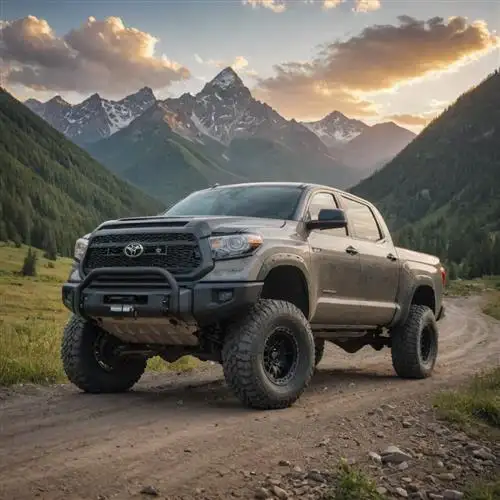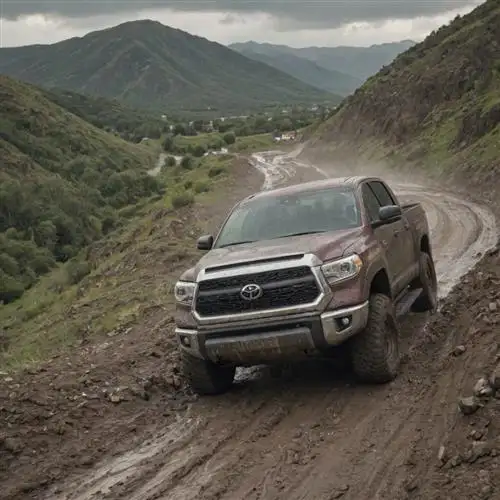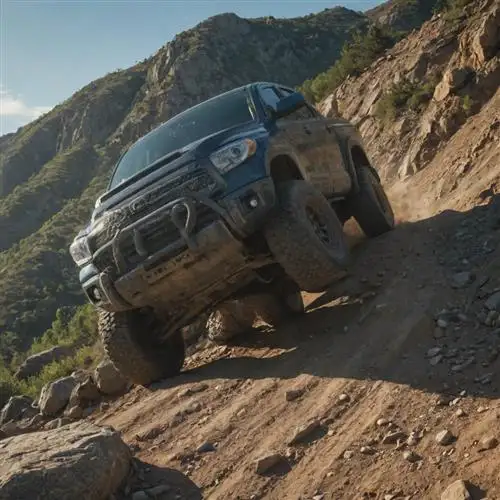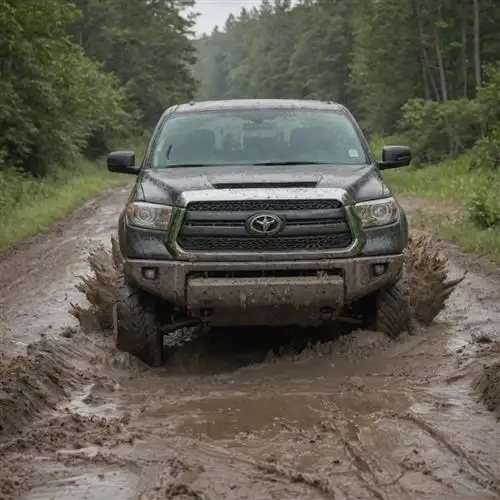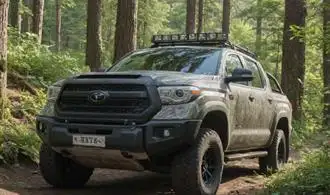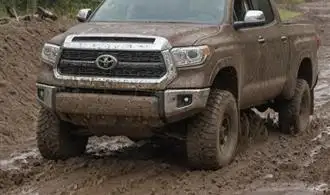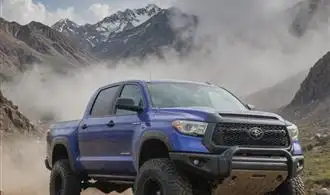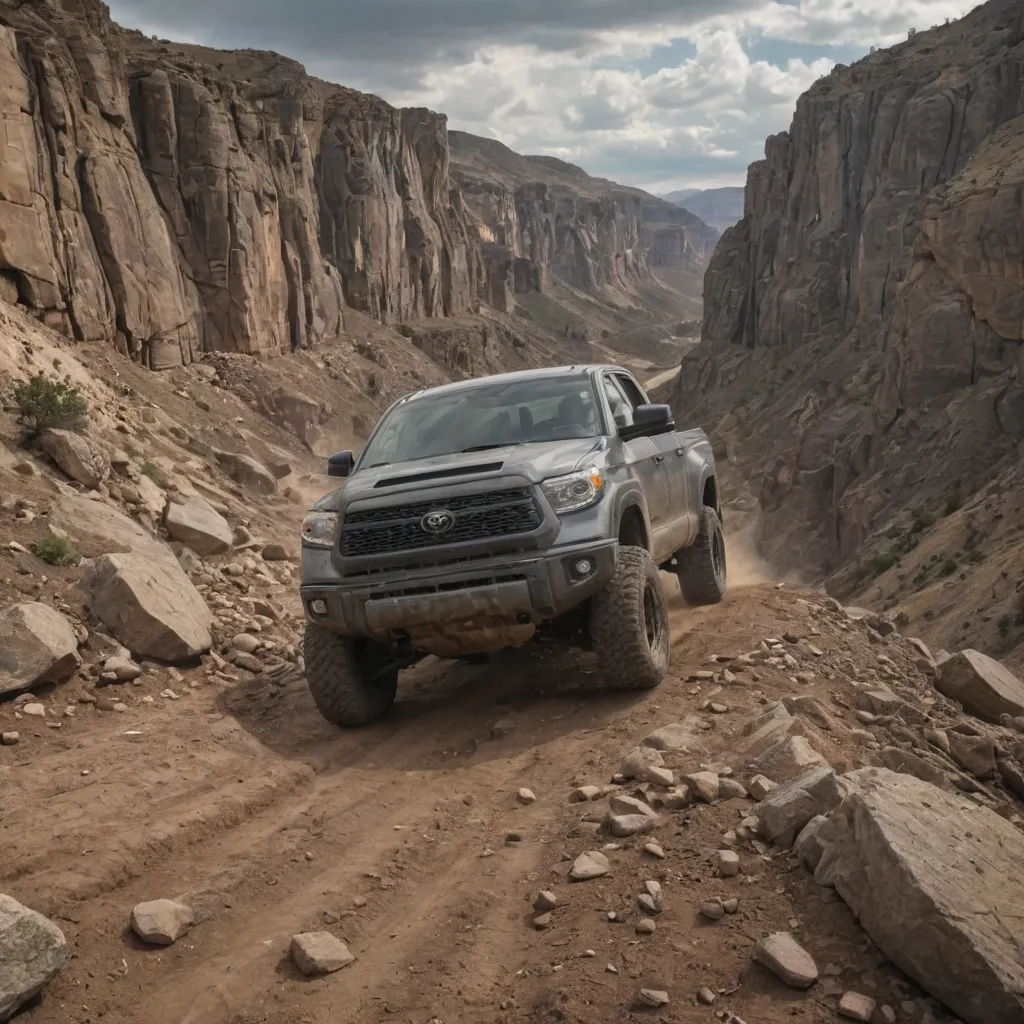
Optimizing Your Tundra for Off-Road Dominance
Conquering the toughest trails in your Toyota Tundra requires more than just a capable off-road machine. It's about tailoring your truck's performance and capabilities to the specific demands of the terrain you'll be navigating. From upgrading your suspension to enhancing your traction control, there are numerous ways to transform your Tundra into an unstoppable off-road champion.
One of the most critical aspects of optimizing your Tundra for off-road dominance is the suspension system. Upgrading to a high-quality lift kit can provide the necessary clearance to tackle obstacles and uneven terrain with ease. Look for kits that offer adjustable ride height, as this allows you to fine-tune the setup to match the specific conditions of your chosen trails. Pair the lift kit with heavy-duty shocks and springs that can absorb the impacts and stresses of off-road driving without compromising comfort or control.
Traction is another key factor in conquering the toughest trails. Consider upgrading your Tundra's tires to a set of rugged all-terrain or mud-terrain variants. These tires are designed to provide excellent grip and traction on a variety of surfaces, from loose dirt and gravel to rocky terrain and deep mud. Additionally, explore the possibility of installing a locking differential or upgrading your existing differential to enhance your Tundra's ability to maintain traction and power through challenging obstacles.
Off-road driving often requires precise control and maneuverability, especially when navigating tight trails or negotiating steep inclines and descents. Upgrading your Tundra's steering components, such as the steering box, tie rods, and ball joints, can improve your vehicle's responsiveness and handling. This, in turn, will give you greater confidence and control when tackling the toughest trails.
Another vital consideration is your Tundra's engine performance. Depending on your specific needs and goals, you may want to explore engine modifications, such as a performance exhaust system, air intake, or even a turbocharger or supercharger. These upgrades can provide a noticeable boost in power and torque, which can be particularly beneficial when climbing steep inclines or powering through deep mud or sand.
Mastering Traction and Stability on Uneven Terrain
Navigating the rugged off-road terrain with your Toyota Tundra requires a deep understanding of how to maintain traction and stability. The key lies in leveraging the Tundra's robust four-wheel-drive system and advanced technologies to conquer even the most challenging trails.
One of the critical factors in maintaining traction on uneven ground is the proper use of the Tundra's four-wheel-drive system. Engaging the four-wheel-drive mode, either part-time or full-time, depending on the terrain, ensures that power is distributed evenly to all four wheels, improving grip and reducing the risk of getting stuck. Additionally, the Tundra's electronically controlled transfer case allows you to seamlessly switch between two-wheel-drive and four-wheel-drive modes, providing the flexibility to adapt to changing conditions.
Stability on uneven terrain is equally important, and the Tundra's advanced suspension system plays a crucial role. The Tundra's independent front suspension and rear suspension with leaf springs work in harmony to provide a smooth and stable ride, even when navigating through ruts, rocks, and other obstacles. The suspension's ability to absorb impacts and maintain control is essential for keeping the vehicle level and preventing it from tipping or rolling over.
Proper tire selection is another crucial element in conquering the toughest trails. The Tundra's generous ground clearance and available off-road tire packages, such as the TRD Pro or the TRD Off-Road trim levels, provide the necessary traction and durability to tackle challenging terrain. These tires are designed with aggressive tread patterns and reinforced sidewalls to grip the ground and maintain stability, even in the most demanding conditions.
Additionally, the Tundra's advanced technology features, such as the Crawl Control and Multi-Terrain Select systems, can further enhance traction and stability on uneven terrain. The Crawl Control system automatically controls the throttle and brakes, allowing you to maintain a slow and steady pace over obstacles, while the Multi-Terrain Select system optimizes the vehicle's performance based on the specific terrain you're navigating.
Conquering Steep Inclines and Descents
Navigating steep inclines and descents is a true test of a truck's capability and the driver's skill. The Toyota Tundra, with its robust 4WD system and advanced technologies, is well-equipped to tackle the most challenging terrain. To conquer these obstacles, it's essential to understand the nuances of off-road driving and leverage the Tundra's features to your advantage.
When approaching a steep incline, proper technique is crucial. Engage the four-wheel drive system and, if necessary, the low-range gearing to maximize traction and control. Maintain a steady, moderate speed, avoiding sudden accelerations or braking that can cause loss of control. Distribute the vehicle's weight evenly by positioning passengers and cargo accordingly. If the incline is extremely steep, consider engaging the Tundra's Crawl Control feature, which automatically manages the throttle and brakes to maintain a controlled pace, allowing you to focus on steering.
Descending steep slopes requires equal caution and skill. Engage the four-wheel drive system and low-range gearing to ensure maximum control. Gradually apply the brakes, using engine braking as much as possible to avoid relying solely on the vehicle's brakes, which can quickly overheat on long, steep descents. The Tundra's Downhill Assist Control feature can be a valuable tool, automatically maintaining a slow, controlled speed without the need for constant brake application.
Protecting the underside of your Tundra is also essential when navigating steep terrain. Equip the vehicle with appropriate skid plates and rock sliders to shield crucial components from damage. Additionally, consider adding off-road tires with higher sidewalls and more aggressive tread patterns to improve traction and articulation on uneven surfaces.
Navigating Water Crossings and Mud Bogs
When it comes to conquering the toughest trails in your Toyota Tundra, few challenges are as exhilarating and potentially daunting as navigating water crossings and mud bogs. These obstacles require a unique set of skills and a deep understanding of your vehicle's capabilities. By following these expert tips, you can confidently tackle even the most treacherous water and mud-filled terrain.
Assessing the Crossing: Before attempting any water crossing, it's crucial to carefully assess the depth, current, and bottom conditions. Look for submerged obstacles, such as rocks or logs, that could potentially damage your vehicle. If the crossing appears too deep or the current is too strong, it's best to seek an alternative route or consider turning back.
Proper Vehicle Preparation: Ensure your Toyota Tundra is equipped for the task at hand. Check that the air intake is positioned high enough to prevent water from entering the engine, and consider upgrading to a snorkel system for added protection. Additionally, verify that your skid plates, underbody protection, and differential breathers are in good condition to withstand the rigors of water and mud.
Slow and Steady Approach: When approaching a water crossing or mud bog, maintain a slow and steady pace. Avoid sudden acceleration or braking, which can cause you to lose control or become stuck. Gradually increase your speed as you enter the water or mud, maintaining momentum but avoiding excessive speeds that could lead to hydroplaning or loss of traction.
Navigating the Crossing: As you enter the water or mud, keep your eyes focused on the path ahead, scanning for any obstacles or changes in depth. Avoid sudden steering inputs, as this can cause your Tundra to lose its straight-line stability. Instead, make small, controlled adjustments to your steering to maintain your desired trajectory.
Assess Traction and Momentum: Monitor your Tundra's traction and momentum closely. If you feel the wheels start to lose grip or the vehicle begin to slow down, gently apply more throttle to maintain forward progress. Be prepared to engage your 4-wheel-drive system or low-range gears for added traction and control.
Exit Strategically: When exiting the water crossing or mud bog, approach the transition point with caution. Maintain a steady speed and be ready to apply more throttle if needed to climb out of the obstacle. Avoid sudden braking, as this can cause your Tundra to become stuck or lose control.
Conquering Obstacles with Precision and Control
Navigating the rugged and unforgiving terrain of the toughest trails requires a delicate balance of power, control, and finesse. As the driver of a Toyota Tundra, you have the advantage of a robust and capable platform that can tackle even the most formidable obstacles. However, it's your skills and technique that will truly set you apart, allowing you to conquer the toughest challenges with confidence and precision.
One of the key aspects of conquering obstacles is your ability to maintain complete control over your Tundra. This begins with mastering the art of throttle management. Applying the right amount of power at the right time is crucial, as too much throttle can lead to loss of traction and momentum, while too little can leave you bogged down and struggling. Develop a keen sense of when to ease off the gas and when to apply more power, allowing you to navigate the terrain seamlessly.
Equally important is your ability to read the terrain and anticipate upcoming obstacles. Scan the path ahead, identifying potential hazards, changes in surface conditions, and the optimal line to take. This will allow you to make adjustments to your driving style and positioning, ensuring you maintain control and momentum through even the most challenging sections.
Proper weight distribution is another critical factor in conquering obstacles. Shift your weight strategically, using your Tundra's suspension and handling characteristics to your advantage. When navigating steep inclines or descents, shift your weight forward or backward as needed to maintain stability and control. This will not only improve your traction but also enhance your ability to maneuver through tight spaces and avoid potential rollover scenarios.
Approach obstacles with a calm and focused mindset. Avoid sudden or jerky movements, as these can disrupt your Tundra's stability and compromise your control. Instead, maintain a smooth and deliberate driving style, making gradual adjustments to your steering, throttle, and braking as necessary. This level of precision and control will allow you to tackle even the most daunting obstacles with confidence and success.

